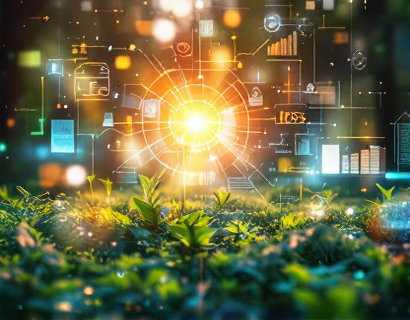Transforming Horticulture and Farming Through Advanced Environmental Analytics for Sustainable Resource Management
The global demand for food is continuously increasing, driven by a growing population and evolving dietary preferences. To meet this demand sustainably, the horticulture and farming sectors must adopt innovative solutions that optimize resource management and enhance productivity. Advanced environmental analytics offers a promising pathway to achieve these goals, enabling farmers and horticulturists to make data-driven decisions that promote sustainable practices and contribute to a healthier planet.
Environmental analytics leverages cutting-edge technologies such as IoT sensors, satellite imagery, and machine learning algorithms to collect and analyze vast amounts of data related to soil health, weather patterns, water usage, and crop growth. By integrating these data sources, farmers and horticulturists can gain comprehensive insights into their operations, identifying areas for improvement and opportunities for optimization.
Optimizing Resource Management
One of the primary benefits of advanced environmental analytics in horticulture and farming is the optimization of resource management. Precision agriculture, a key application of these analytics, allows for the precise application of water, fertilizers, and pesticides based on real-time data. This approach minimizes waste and reduces the environmental impact of agricultural practices.
For instance, soil moisture sensors can provide accurate measurements of soil water content, enabling farmers to irrigate only when necessary and in the exact amounts required. This not only conserves water but also prevents over-irrigation, which can lead to soil erosion and nutrient leaching. Similarly, nutrient sensors can monitor soil nutrient levels, guiding the application of fertilizers to match crop needs, thereby reducing excess runoff and pollution.
Enhancing Crop Yields
Advanced environmental analytics also plays a crucial role in enhancing crop yields. By analyzing historical and real-time data, farmers can identify optimal planting times, crop varieties, and management practices tailored to their specific conditions. This data-driven approach increases the likelihood of successful harvests and higher yields.
Weather forecasting is another critical aspect where environmental analytics adds value. Accurate and timely weather predictions enable farmers to take proactive measures, such as adjusting irrigation schedules or applying protective measures against adverse conditions. This foresight helps mitigate risks and ensures that crops receive the best possible care throughout their growth cycle.
Promoting Sustainable Practices
The integration of advanced environmental analytics in horticulture and farming promotes sustainable practices by encouraging the efficient use of resources and reducing environmental footprints. Sustainable agriculture is not only beneficial for the environment but also enhances the economic viability of farming operations in the long term.
For example, by optimizing water usage through precision irrigation, farmers can significantly reduce their water consumption, a critical resource in many regions. This conservation not only benefits the environment but also lowers water costs, improving the overall profitability of the farm. Similarly, precise application of fertilizers and pesticides minimizes chemical usage, reducing the risk of contamination and promoting biodiversity.
Case Studies and Real-World Applications
Several case studies demonstrate the positive impact of advanced environmental analytics on horticulture and farming. In one instance, a large-scale vegetable farm implemented a system of soil moisture and nutrient sensors across its fields. The data collected was analyzed to create customized irrigation and fertilization plans for different sections of the farm. As a result, the farm reported a 30% reduction in water usage and a 20% increase in crop yields.
Another example involves a fruit orchard that utilized weather forecasting and drone-based imagery to monitor tree health and detect early signs of disease. By intervening promptly, the orchard was able to prevent the spread of disease, saving both trees and the costs associated with treatments. This proactive approach led to a 15% increase in fruit quality and yield.
Challenges and Considerations
While the benefits of advanced environmental analytics are clear, there are challenges and considerations that must be addressed for successful implementation. One major challenge is the initial cost of setting up the necessary infrastructure, including sensors, data storage, and analysis tools. However, the long-term savings and increased productivity often justify the investment.
Data privacy and security are also critical concerns. Farmers and horticulturists must ensure that their data is protected from unauthorized access and misuse. Implementing robust security measures and working with reputable providers can help mitigate these risks.
Additionally, the complexity of the technology and the need for skilled personnel to interpret and act on the data can be barriers for some operators. Providing training and support is essential to ensure that users can fully leverage the capabilities of environmental analytics.
Future Trends and Innovations
The field of environmental analytics in horticulture and farming is rapidly evolving, with ongoing innovations poised to further enhance its impact. One emerging trend is the integration of artificial intelligence (AI) and machine learning to improve data analysis and decision-making processes. AI can identify patterns and make predictions with greater accuracy, enabling more precise and effective management strategies.
Another area of development is the use of unmanned aerial vehicles (UAVs) or drones equipped with advanced sensors for real-time monitoring of crops and fields. Drones can cover large areas quickly and provide detailed imagery, allowing for rapid assessment and response to issues such as pest infestations or nutrient deficiencies.
Furthermore, the development of blockchain technology offers potential for transparent and secure tracking of agricultural products from farm to table. This can enhance traceability and build consumer trust in sustainably produced foods.
Conclusion
Advanced environmental analytics represents a transformative force in the horticulture and farming sectors, offering powerful tools for optimizing resource management, enhancing crop yields, and promoting sustainable practices. By embracing these technologies, farmers and horticulturists can not only increase their productivity and profitability but also contribute to environmental conservation and a healthier planet. As the technology continues to advance, the potential for positive change in agriculture becomes ever more promising.










































